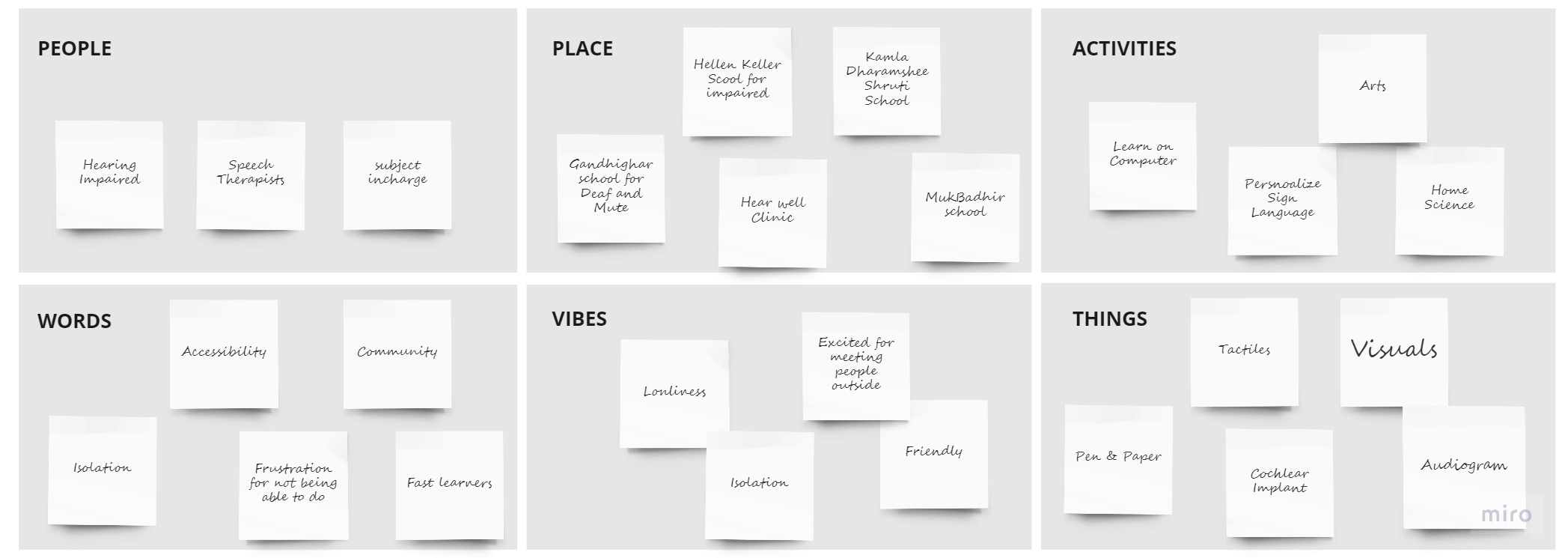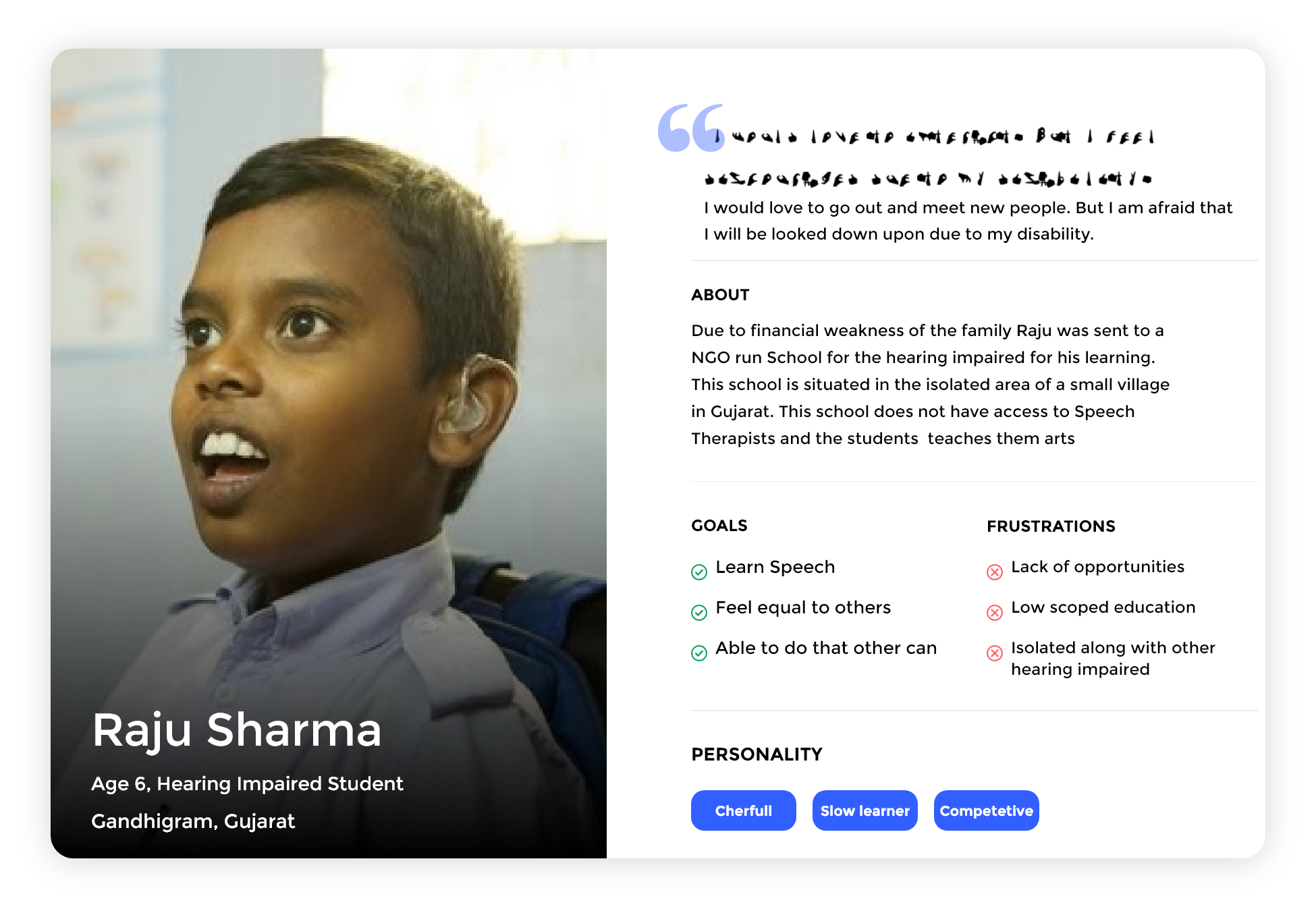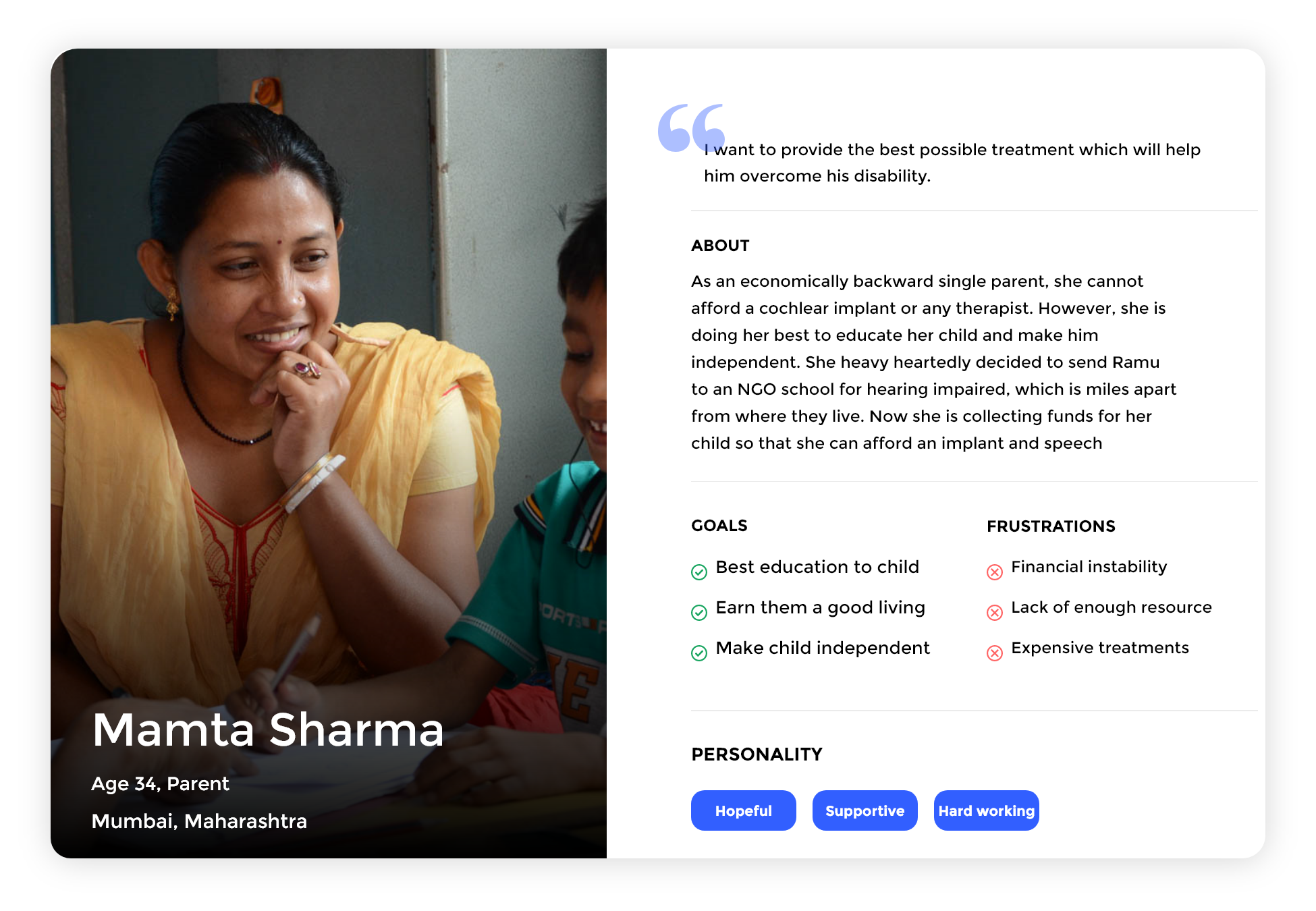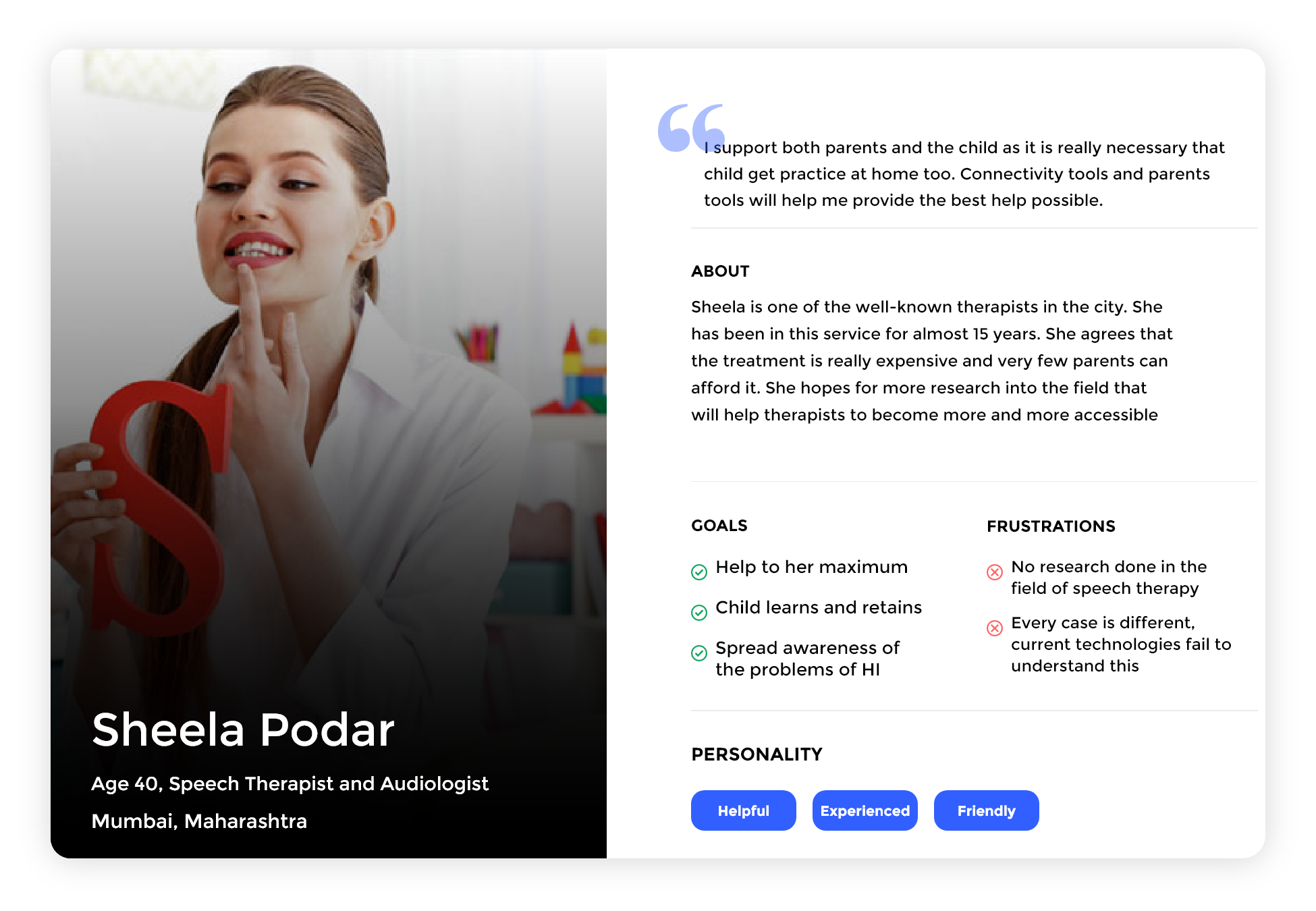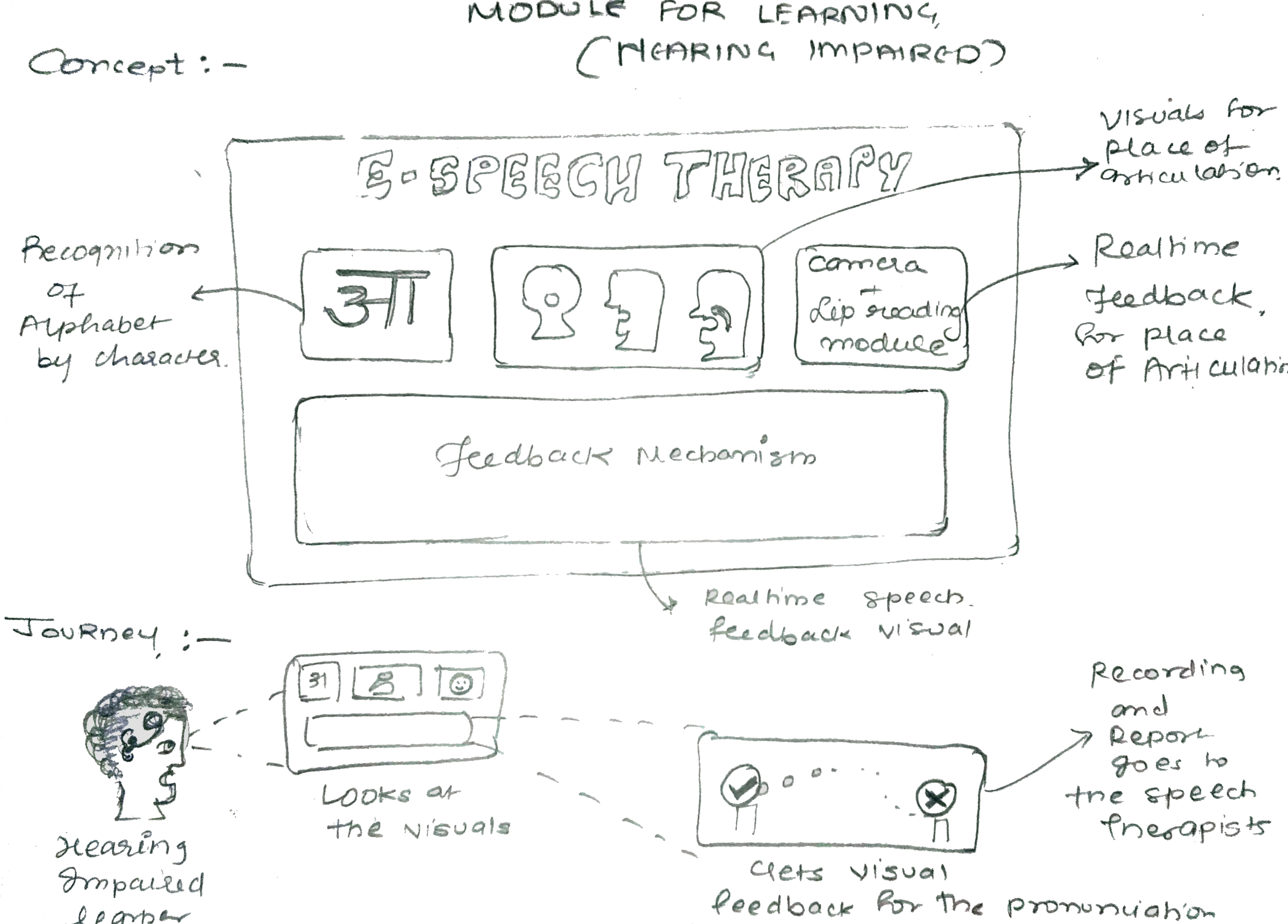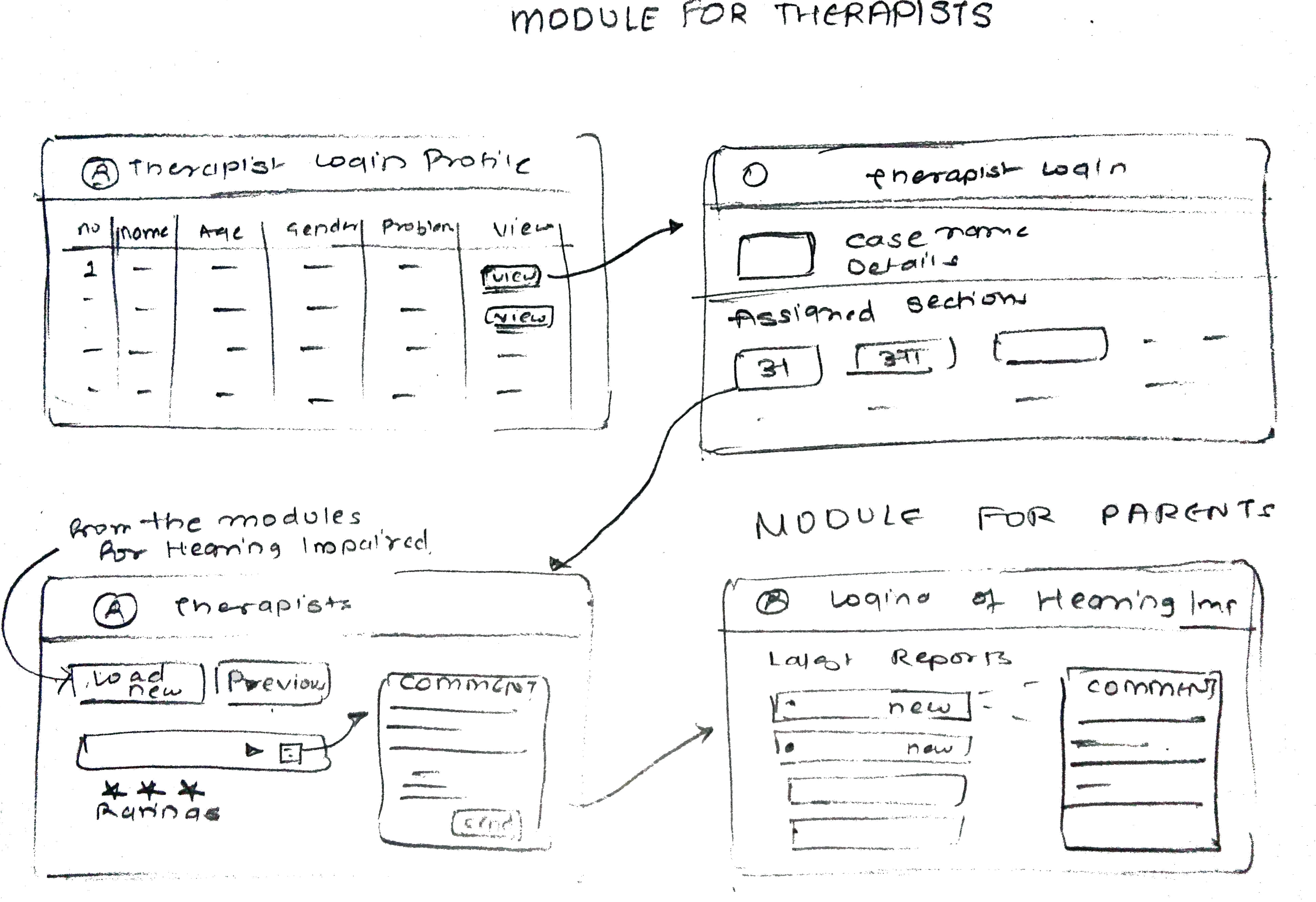Introduction
I undertook this project as my final year project for my undergrad course. Year-long research including ethnography, interviews, and field visits, contributed to the discovery of the answer to this question and the ideation of a potential technological solution. The project solution spans across fields like - digital signal processing, Animations, and gamification. The project is still in its development phase. However, I would like to share the research, design process, and the outcomes to date.
Team
Kritika Mittal
Yashvi Upadhyaya
Project Guide
Prof. Mayur Parulekar - Electronics
Prof. Anusha Vegesna - IT
Duration
October, 2018 - Present
Motivation
Being involved in projects related to accessible technologies of the hearing impaired, I came accross the statistics presented by the World health Organization. THe numbers were really surprising.
- Over 5% of the world’s population – or 466 million people – has disabling hearing loss (432 million adults and 34 million children). It is estimated that by 2050 over 900 million people – or one in every ten people – will have disabling hearing loss.
- The ratio of speech therapists to the deaf population was 1:200
This ignited in me thought "I think many hearing impaired cannot speak just because they do not have access to speech therapists"...To get answers to this, I planned to conduct a research study and was set on my venture to find a reasonable answer to this problem and ideate a solution to solve this.
Methodology
To proceed with the user research and field study I adopted the following methodology.


